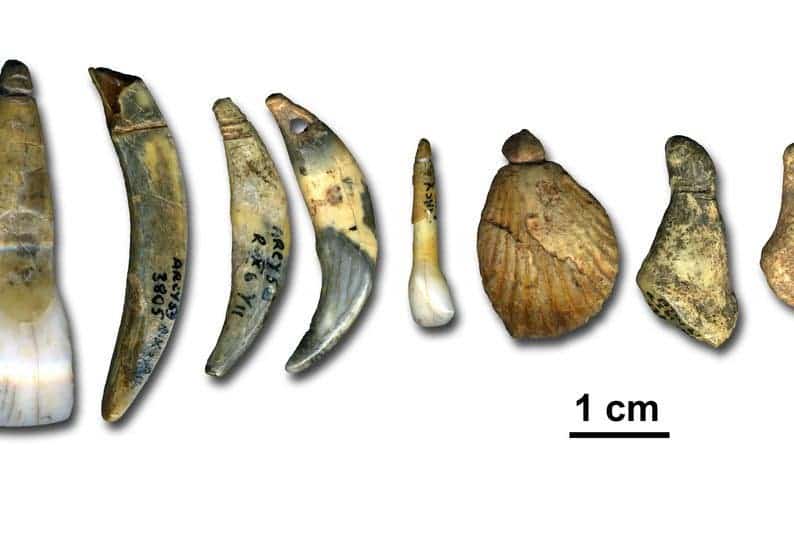
Grotte du Renne is an archaeological site in Arcy-sur-Cure, France. It is here that for more than a century anthropologists have found countless artifacts and hominid remains, so many that they’ve called it the Châtelperronian industry. Among these artifacts we can remind beads of animal teeth, shells, and ivory, some of which are engraved and carefully shaped. But despite the jewelry — or what looks like it — and fragile bone tools were found in the same layers as fossils from Neandertals, most scientists refused to believe that our Neanderthalian cousins were capable of symbolistic expression.
Professor Matthew Collins, Director of BioArCh at the University of York’s Department of Archaeology, may have put this long-lasting debate to rest. He and colleagues from Unversity of York, in close collaboration with the Max Planck Institute (MPI) for Evolutionary Anthropology in Germany, used a novel technique that used protein amino acid analysis and radiocarbon dating to discriminate between modern human and Neanderthal remains.
The biological origin of the Châtelperronian people has been long disputed because the passage of time destroyed DNA beyond recovery. Absent our most reliable forensic tool for identifying and differentiating organisms, speculations ran amock. For instance, some scientists tried to explain the dilemma of Châtelperronian artifacts sourced from the same layer of sediments as Neanderthal remains by suggesting investigators accidentally mixed different layers. Few seriously entertained the possibility that Neanderthals were capable of such craftsmanship.
Collins and colleagues used their peptide mass fingerprinting technique to identify 28 hominin specimens from the bone fragments collected at the Grotte du Renne. But did these belong to modern humans or Neanderthals? To get to the bottom of things, the researchers determined the chemical composition of collagen in the bone fragments. The analysis suggests the collagen was once rich in an amino acid called asparagine. Modern human collagen contains high amounts of aspartic acid, though, and previous studies found Neanderthals had genes that code for specific collagen production of an asparagine-rich version.
“These methods open up new avenues of research throughout Late Pleistocene contexts in which hominin remains are scarce and where the biological nature of remains is unclear due to ancient DNA not being preserved. This represents a significant advance in palaeoproteomic phylogenetics and is of direct relevance to our understanding of hominin evolution,” Collins said in a statement.
Additionally, the collagen was found in bone that was still growing suggesting it belonged to a juvenile. A high concentration of nitrogen isotopes also suggests that the child was breast-feeding. So, at least part of the fragments from Grotte du Renne analyzed by the researchers came from a Neanderthal infant — a 42,000-year-old infant, based on radiocarbon dating, which corresponds to the dating made for the beads, tools and other artifacts found in the same place.
“The process of replacement of archaic local populations by modern humans in Eurasia is still poorly understood, as the makers of many palaeolithic tool-kits of this time period remain unknown. This type of research now allows us to extract unrecognisable human fragments out of large archaeological assemblages and to revisit the mode and the tempo of this major event in human evolution with fresh material,” said Professor Hublin, at the Max Planck Institute for Evolutionary Anthropology in Leipzig.
More importantly, maybe, is that we have yet another study that shows Neanderthals were a lot more cognitively-gifted than many give them credit for.






